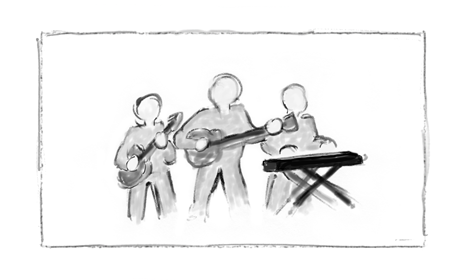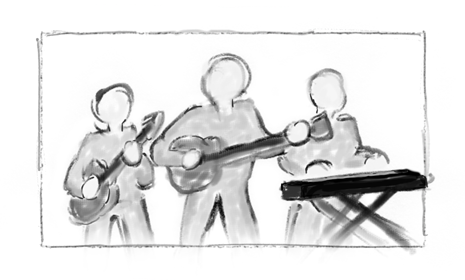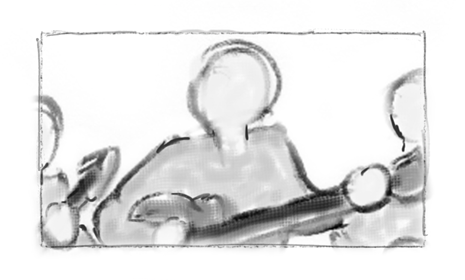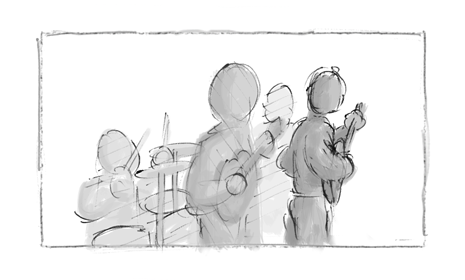I will just show you two contrasting examples of a live performance music video, both taken from live sessions:
|
Finches of Attica “Ill Be A Man” (Quad Studios) (Live Performance Music Video) |
Elizabeth Cornish “Displaced” (Home Recording) (Live Performance Music Video) |
The video for the Finches of Attica is a live group at Quad Studios. The video for Elizabeth Cornish is of her performing live, recording at home.
The difficulty with filming live is not necessarily the filming – it is the audio; getting the sound recording to the performer or band’s satisfaction. If a band feels they are not performing well – they may need to perform songs again, or, worse, after the event declare they can’t mix the audio into anything they like. In extreme, you can re-edit the footage to fit studio-recorded tracks; but this is additional, unnecessary work. Also, it would have just been easier to record to playback in the first place.
From the perspective of filming, the problem is mainly about getting enough cameras to obtain proper coverage of the performer or band. You are trying not to get in the way of the band, allow them to set-up their audio recording and perform without having to worry they are surrounded by cameras.
Ideally you want a variety of cameras positions, both close and wide, and from different directions, below represent a selection of framed shots you would want as a bare minimum:
 |
 |
 |
This selection of framed shots could be conceivably taken from one camera position, if it was an operated camera. However, if you just have a camera on a tripod, then you have to pick a framing and stick with it. This could be the position of a fan in a crowd; but realistically your average fan isn’t going to be able to hold a camera steady while getting close-ups of their favourite singer in close-up. |
The minimum number of cameras you can get away with is three: one fixed (‘locked’) camera covering the whole band (or a long shot of the performer) and then two operated cameras, on opposing sides of the performer or band. The locked down camera acts as a ‘master’ or main shot you can rely on; the two operated cameras can vary framing and subject – close ups of the face or instrument of the performer, and, if a band, making sure you have medium shots, close-ups of all the band members and their instruments. Depending on the song or performance, you can use this ‘master’ heavily and just ‘cut in’ to show close-ups and medium shots of the performer or their instrument to heighten the moment in a ballad. For a more frenetic songs from a band; the camera operators can roam more freely around filming whoever is active – you only use the ‘master’ to cover camera movements by the manned cameras (if the movements don’t fit the song). With experienced or well-briefed camera operators, you can rely on them to obtain wide, medium and close-up shots of the audience, so you can ‘cut away’ from the ‘master’ and show audience reactions, appreciation.
 |
 |
The advantage of an operated camera, with an experienced operator, is that you can get multiple, useful, framed shots from just one position. A single camera position can deliver wide, medium and close-up shots. If you then have multiple camera operators, you are then able to gather coverage of a performance that, in editing, allows the editor to provide access and intimacy to the performance; lack of immediacy in being able to experience the performance can be replaced by being able to momentarily hang out with the drummer, lead guitarist, as well as the lead singer, while they all contribute to the song.
